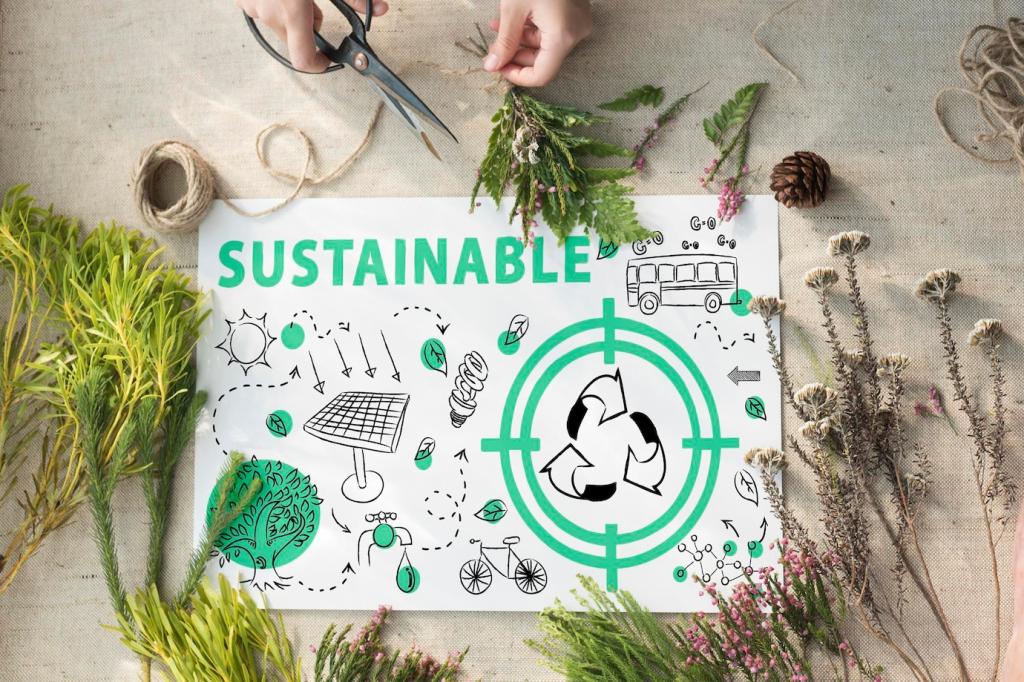Cooling Cities from the Top Down
Understanding Urban Heat and the Rooftop Opportunity
Why Cities Heat Up Faster
Dark, impervious surfaces soak up sunlight, engines release waste heat, and wind struggles through tight street canyons. Together, they create the urban heat island effect. Green roofs introduce moisture, shade, and texture, interrupting this feedback loop and offering a gentle, sustained cooling presence above the bustle.
Rooftops: Acres of Untapped Climate Space
Look across a skyline and you’ll see vast, flat surfaces waiting to work harder. Converting bare roofs into planted systems transforms idle square footage into climate infrastructure, reducing heat build-up, cushioning temperature swings, and setting a visible example that inspires neighboring buildings to join the cooling effort.
Green Roofs as Urban Heat Shields
Soil and vegetation shield membranes from direct sun, while plants release moisture that carries heat away. Compared with black roofs, green roofs can keep surfaces dramatically cooler on peak days, softening heat radiated to the streets below and making adjacent spaces feel more breathable and humane.
The Cooling Science of Green Roofs
Evapotranspiration: Plants as Natural Air Conditioners
When plants move water from soil to air, they use energy to change liquid into vapor. That phase change removes heat from the surroundings. Spread across a roof, countless tiny leaf pores quietly pump moisture skyward, easing midday peaks and creating air movement that feels like a soft, cool exhale.
Albedo and Shading: Less Heat In, More Comfort
Leaves and light-colored growing media reflect a portion of sunlight before it becomes heat. Canopy layers shade the roof membrane, reducing heat flux into the building. The result is a calmer indoor environment and less thermal radiation pouring back into the city’s already stressed microclimate.
Thermal Lag: Slowing the Heat Wave
Green roofs store and release heat more slowly than bare surfaces. Moist soil, plant tissues, and air pockets delay the daily temperature spike, shifting and flattening peaks. That gentle time delay reduces strain on cooling systems and keeps roof-level microclimates noticeably more comfortable in late afternoon.
Choose the Right System: Extensive vs. Intensive
Extensive systems are lighter, thinner, and lower maintenance, spreading cooling across broad areas. Intensive systems support deeper soils, shrubs, even small trees, amplifying shade and moisture. Match structure, budget, and climate goals to the system type to maximize cooling without compromising safety or practicality.
Plant Palette that Thrives and Cools
Select resilient, drought-tolerant species with varied leaf structures and growth habits. Mixing sedums with native grasses and flowering perennials boosts evapotranspiration and shade through the season. Diversity prevents brownouts during heatwaves, sustains pollinators, and keeps the rooftop cooling steadily when the city needs relief most.
A Warehouse that Became a Breezier Neighbor
After replacing a bitumen roof with a green system, a logistics hub saw midday surface readings plunge during summer. Drivers noticed delivery bays felt less oppressive, and nearby sidewalks lost that shimmering heat haze. Cooling didn’t just show up in graphs—it arrived as easier breaths and calmer afternoons.
School Roof that Sparked a Community Cool-Down
Students layered soil, planted wildflowers, and tracked temperatures for science class. Their thermal images showed the school roof glowing less red in July. Parents asked how to help, and two nearby buildings followed suit. Cooling spread, guided by young scientists grinning over clipboards and sunhats.
From Sizzling to Social: A Residential Retrofit
An older walk-up softened its top floor with a lightweight green roof. The resident who once slept with ice packs now opens a book by a fan. Summer energy bills dipped, and the roof became a quiet gathering place at dusk, scented with thyme and buzzing with tiny wings.
Measuring Cooling Success
Place small surface sensors on planted and bare segments, plus a shaded air sensor near roof level. Log hourly data through heatwaves. You’ll see sharper spikes on bare areas and smoother, lower peaks where plants and soil are working their quiet, consistent magic.
Before-and-after thermal photos are powerful. Handheld or drone images reveal hot spots, cool patches, and the border where vegetation starts changing the roof’s heat signature. Share those visuals with neighbors and decision-makers to spark momentum for more cooling across the block.
Collect hourly cooling demand and monthly utility bills for seasons before and after installation. Watch for lower afternoon peaks and gentler daily curves. Even modest reductions compound into savings, comfort, and resilience when grids stretch thin during prolonged heat events.


Know Your Local Rules and Rewards
Many cities offer rebates, fee reductions, or stormwater credits for green roofs that reduce heat and runoff. Check eligibility, design standards, and maintenance requirements early. Aligning with policy can shrink costs and fast-track approvals while delivering measurable cooling benefits to the community.
Build a Rooftop Coalition
Invite facility managers, residents, and nearby businesses to walk your roof at sunset. Share data, listen to concerns, and trade tips about plant choices and irrigation. Collective efforts attract funding and create continuous corridors of cooling that outpace what any single building could achieve.
Maintenance Plans that Keep Cooling Reliable
Set seasonal inspections, clear drains, spot-replant bare patches, and verify irrigation before heatwaves. A tidy, thriving roof maintains moisture and shade when temperatures surge. Consistency protects your investment and preserves the daily cooling performance that people feel on sidewalks and in upper floors.

